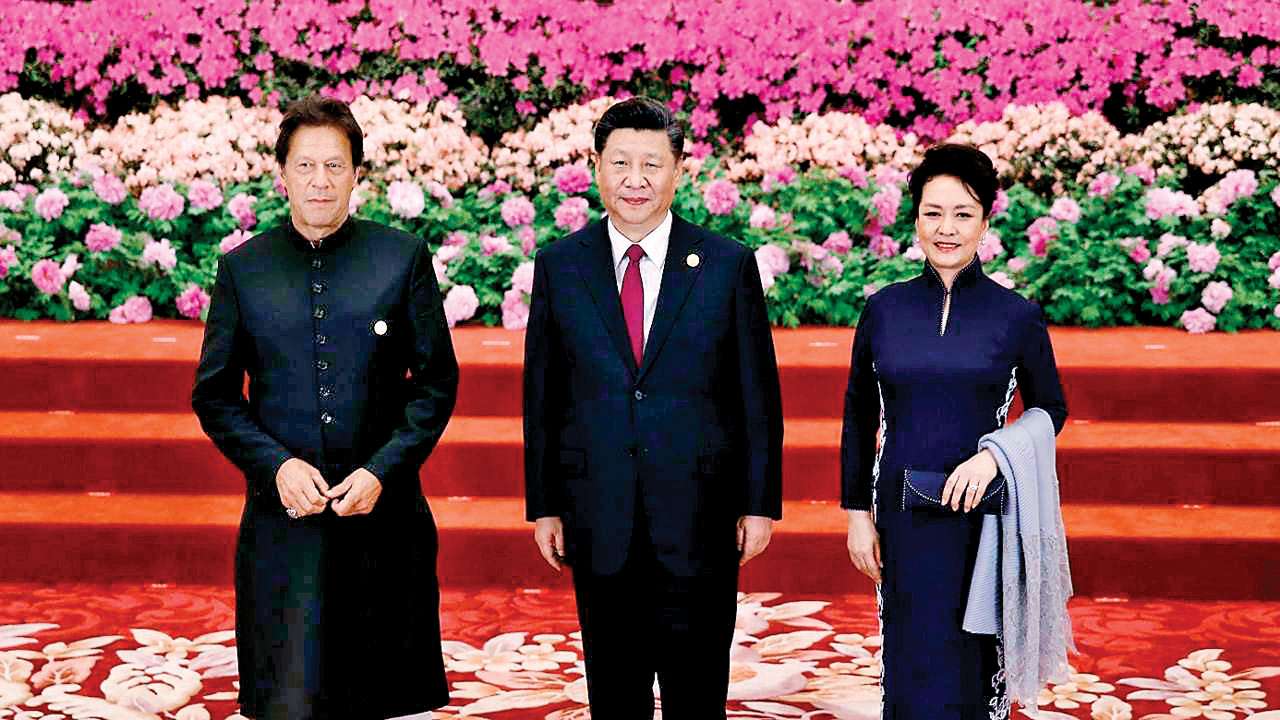
China held the second conference on the Belt Road Initiative (BRI) in Beijing on April 25-26, 2019, wherein 40 heads of states, delegates from 150 countries and 90 international organisations from different parts of the world participated.
These included the likes of Russian President Vladimir Putin, President Ueli Maurer of Switzerland, Malaysian Prime Minister Mahathir Mohammad, UN General Secretary Antonio Guterres, Pakistani Prime Minister Imran Khan, Nepali President Bindiya Bhandari and state Counselor Aung San Su-Kyi of Myanmar.
With the presence of about 5,000 delegates, the second Belt Road Forum provided an opportunity for China to take stock of the BRI and plan the next course of action for the success of this global project.
Ever since the One Belt One Road (OBOR) Initiative (now known as the BRI) was launched in 2013, it has become the most ambitious project of the Chinese government to reshape the regional and global order.
While the BRI is generally viewed in terms of a plan to build infrastructure projects, its other elements include strengthening regional political cooperation, unimpeded trade, financial integration and people-to-people exchanges.
The BRI, covering 76 countries from Asia, Africa, and Europe, accounts for half the world’s population and a quarter of global GDP.
In fact, the Xi Jinping government has focussed on mobilising the country’s political, diplomatic, intellectual, economic, and financial resources to establish China as the unquestionable regional and global power.
While the BRI is expected to cost more than $11 trillion, President Xi Jinping has said that the total trade volume between China and Belt and Road participating countries exceeded $6 trillion from 2013 to 2018, while China has so far chalked up $80 billion in direct foreign investment in these countries. Xi also announced that projects worth $64 billion and 283 deliverables were signed at the forum.
But, it is equally true that apprehensions about the BRI as trap diplomacy by China have also increased, symbolised by cases of the China-Pakistan Economic Corridor (CPEC), the Hambantota Port and others.
In fact, Malaysia had put on hold the Chinese rail project until the original cost was cut by 30 per cent.
Realising this negative image, President Xi focussed on engaging with other countries, saying that the “Belt and Road Initiative is not only for China, but open to other nations’ participation.”
India, a major emerging economic and military power in Asia, has refused to join BRI on the ground that the CPEC violates its sovereignty because it passes through the part of the Pakistan-occupied Kashmir that belongs to India.
Unlike in the past, this time, the US also did not send its representative for this summit. In fact, New Delhi and Washington have a shared understanding of the possible strategic and security threats emerging from the BRI.
New Delhi and Washington have taken several measures to effectively challenge Xi Jinping’s pet project. In doing so, while India has focused on enhancing its engagement with Southeast Asian countries under the Act East Policy, it also sees a point in Trump’s Indo-Pacific strategy to maintain and promote peace and security in the region.
US secretary of state Mike Pompeo has announced that “Indo-Pacific Economic Vision” will increase the financial support that the US government provides to countries in the region through a proposed agency, the US International Development Finance Corporation (USIDFC).
The rival Quadrilateral Security Dialogue between the US, Japan, Australia and India last year is also attributed to the intention of these countries to check China’s rise.
At the same time, India is focused on working with Japan in developing an Asia-Africa Growth Corridor (AAGC), which will help create a “free and open Indo-Pacific region” by rediscovering ancient sea-routes and creating new sea corridors that will link the African continent with India and countries in South-Asia and South-East Asia.
It has to be seen whether the BRI 2.0 really promotes multilateralism in Asia and beyond or it further amplifies the concerns about China’s perceived efforts to dominate the regional global power structure.
Author is Research Fellow, Maulana Abul Kalam Azad Institute of Asian Studies, Kolkata